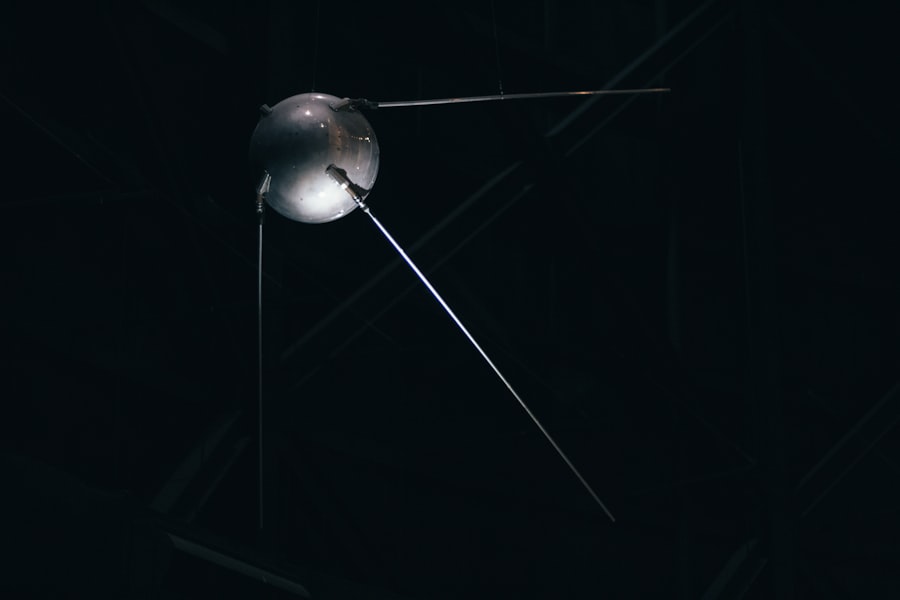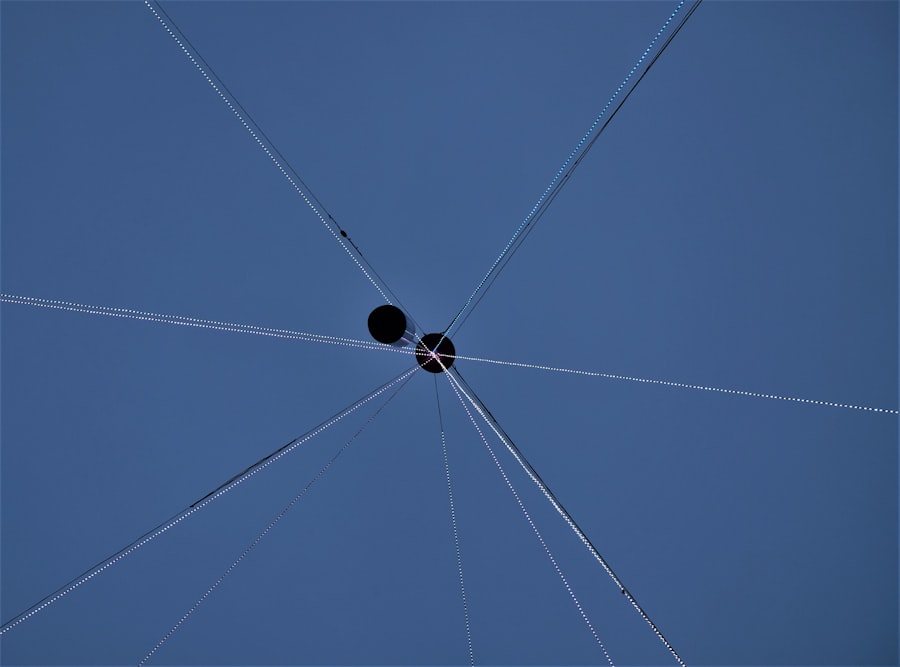Skylab, the United States’ first space station, marked a significant milestone in the history of human space exploration. Launched on May 14, 1973, by NASA, Skylab was a pioneering venture that provided invaluable insights into long-duration spaceflight and the effects of microgravity on the human body. The space station was designed to serve as a laboratory for scientific research and a platform for astronauts to live and work in space for extended periods.
Skylab’s design was innovative for its time, featuring a modular structure that allowed for various configurations and experiments, making it a versatile tool for scientific inquiry. The conception of Skylab emerged from the Apollo program’s successes, particularly the Apollo Lunar missions. NASA sought to extend its capabilities beyond lunar exploration and into the realm of sustained human presence in low Earth orbit.
Skylab was not merely a continuation of the Apollo legacy; it represented a new frontier in understanding how humans could adapt to life in space. The station’s launch was a culmination of years of research and development, and it set the stage for future endeavors in space habitation and exploration.
Key Takeaways
- Skylab was the United States’ first space station, launched in 1973 and operated until 1979.
- The mission of Skylab was to conduct scientific experiments in space and study the effects of long-duration spaceflight on the human body.
- Astronauts lived and worked in Skylab for extended periods, conducting experiments, observing the Earth, and studying the sun.
- Skylab facilitated over 270 scientific experiments in areas such as solar physics, Earth resources, and materials science.
- Skylab’s legacy includes valuable data on long-duration spaceflight, solar research, and Earth observation, paving the way for future space exploration missions.
Skylab’s Mission and Objectives
The primary mission of Skylab was to conduct scientific research in a microgravity environment, which could not be replicated on Earth. NASA aimed to explore various fields, including astronomy, materials science, and biological studies. One of the key objectives was to understand how the human body reacts to prolonged exposure to microgravity, which was crucial for planning future long-duration missions, such as those to Mars.
Skylab’s mission was not only about scientific discovery but also about testing the limits of human endurance and adaptability in space. In addition to biological and physical sciences, Skylab’s objectives included solar observations. The station was equipped with instruments designed to study solar phenomena, such as solar flares and coronal mass ejections.
These observations were vital for understanding solar activity’s impact on Earth’s atmosphere and technology. The combination of human factors research and solar studies made Skylab a unique platform for advancing our knowledge of both space and life sciences.
Living and Working in Skylab

Living aboard Skylab presented unique challenges and opportunities for astronauts. The station was designed to accommodate three-man crews for missions lasting up to 84 days. Astronauts had to adapt to a confined living space that included sleeping quarters, a galley for food preparation, and workstations for conducting experiments.
The interior layout was carefully planned to maximize efficiency while ensuring that astronauts could perform their tasks effectively. The experience of living in microgravity required astronauts to develop new routines for daily activities such as eating, sleeping, and exercising. One of the most significant adaptations involved nutrition and food consumption.
Skylab’s crew had access to specially prepared meals that were designed to be consumed in microgravity. This meant that food packaging had to be rethought; items were often dehydrated or packaged in ways that prevented them from floating away during consumption. Exercise was also a critical component of life aboard Skylab, as astronauts needed to counteract the muscle atrophy and bone density loss associated with prolonged weightlessness.
The station was equipped with exercise equipment, including a treadmill and stationary bicycle, which became essential tools for maintaining physical health.
Scientific Experiments Conducted in Skylab
| Experiment Name | Duration | Objective |
|---|---|---|
| Solar Astronomy | 84 days | Study solar phenomena |
| Earth Resources | 84 days | Study Earth’s resources |
| Space Physiology | 84 days | Study effects of space on human body |
| Material Processing | 84 days | Study materials in microgravity |
Skylab hosted a wide array of scientific experiments that spanned multiple disciplines. One of the most notable experiments involved the study of the human body’s physiological responses to microgravity. Researchers monitored astronauts’ cardiovascular systems, muscle mass, and bone density throughout their missions.
This research provided critical data that informed future missions and helped scientists understand the potential health risks associated with long-duration spaceflight. In addition to biological studies, Skylab served as an astronomical observatory. The Apollo Telescope Mount (ATM) was a key feature of the station, allowing astronauts to conduct solar observations with unprecedented detail.
The ATM enabled scientists to capture images of solar flares and other solar phenomena, contributing significantly to our understanding of solar dynamics. These observations were not only important for astrophysics but also had practical implications for understanding how solar activity affects satellite operations and communications on Earth.
Skylab’s Impact on Space Exploration
The impact of Skylab on space exploration cannot be overstated. It laid the groundwork for future space stations, including the International Space Station (ISS). The lessons learned from Skylab’s design, operation, and scientific research informed subsequent missions and helped shape international collaboration in space exploration.
Skylab demonstrated that humans could live and work in space for extended periods, paving the way for longer missions beyond low Earth orbit. Moreover, Skylab’s emphasis on scientific research established a precedent for future space missions focused on inquiry rather than mere exploration. The data collected during Skylab missions contributed significantly to our understanding of human physiology in space and advanced our knowledge of solar physics.
This focus on science has become a hallmark of modern space exploration efforts, emphasizing the importance of research alongside exploration.
Challenges and Setbacks Faced by Skylab

Despite its successes, Skylab faced numerous challenges and setbacks during its operational period. One significant issue arose shortly after its launch when it was discovered that the station’s thermal protection system had been damaged during ascent. This damage led to overheating within the station, posing risks to both equipment and crew safety.
NASA engineers quickly devised solutions, including deploying sunshades to regulate temperature and protect sensitive instruments from excessive heat. Another challenge involved the psychological well-being of astronauts during long-duration missions. The confined living quarters and isolation from Earth could lead to stress and fatigue among crew members.
NASA implemented various strategies to mitigate these effects, including scheduled leisure activities and communication with family members back home. These measures were crucial in maintaining crew morale and ensuring that astronauts could perform their duties effectively throughout their missions.
Legacy of Skylab
The legacy of Skylab extends far beyond its operational years. It served as a catalyst for advancements in human spaceflight technology and research methodologies that continue to influence contemporary space exploration efforts. The data gathered from Skylab missions has been instrumental in shaping our understanding of human health in space, informing protocols for future long-duration missions such as those planned for Mars exploration.
Skylab also played a pivotal role in fostering international cooperation in space science. The collaborative spirit that emerged from Skylab’s missions laid the groundwork for partnerships that would later define projects like the ISS. By demonstrating the feasibility of sustained human presence in orbit, Skylab inspired subsequent generations of scientists, engineers, and astronauts to pursue ambitious goals in space exploration.
Skylab’s Contributions to Space Exploration
Skylab’s contributions to space exploration are profound and multifaceted. As the first American space station, it not only advanced our understanding of life in microgravity but also set a precedent for future scientific endeavors in orbit. The lessons learned from its missions continue to resonate within NASA and the broader scientific community as we prepare for new challenges in space exploration.
The pioneering spirit embodied by Skylab serves as a reminder of humanity’s quest for knowledge beyond our planet. Its legacy is evident in ongoing research efforts aimed at understanding the complexities of living and working in space, ensuring that future generations can build upon its achievements as we venture further into the cosmos.


